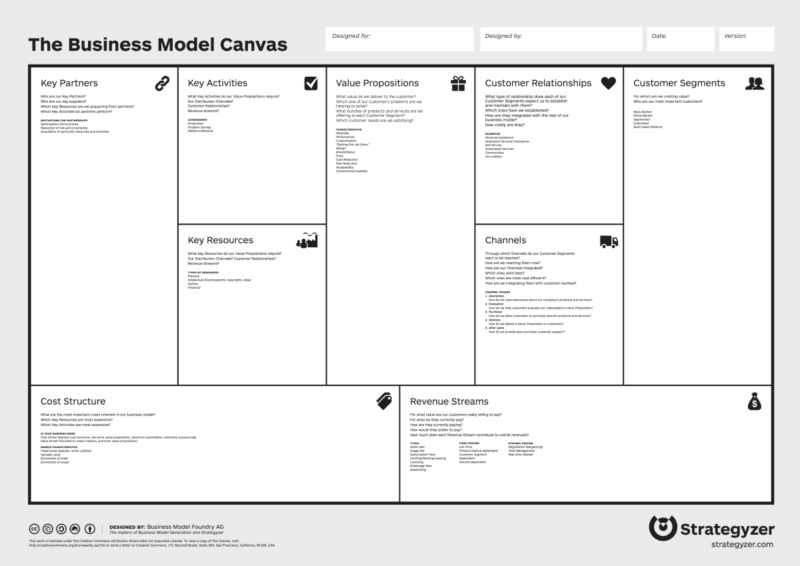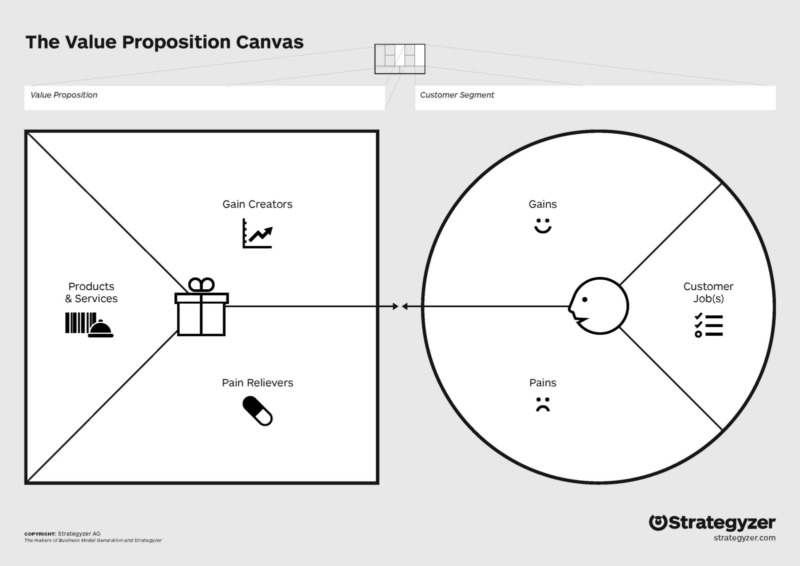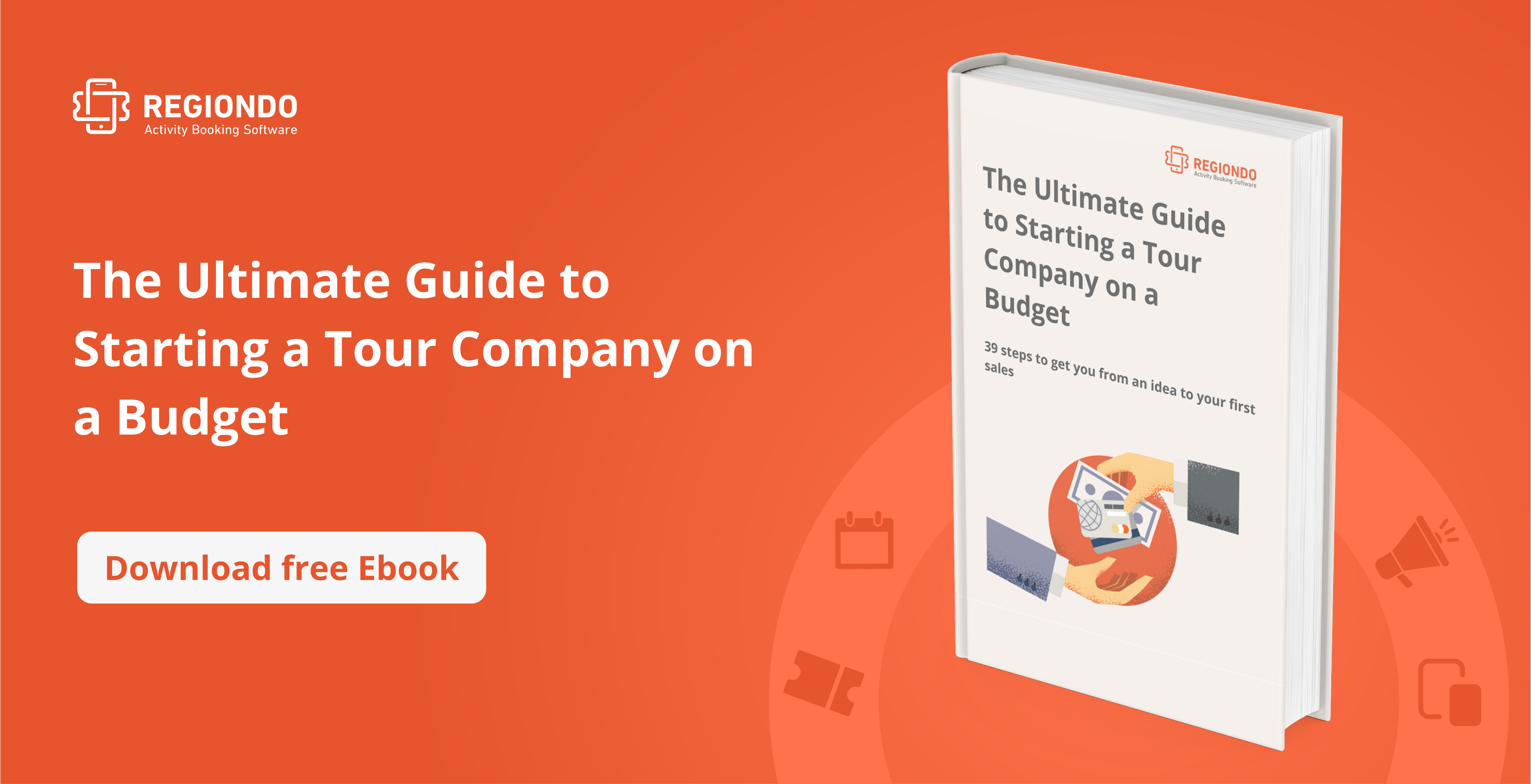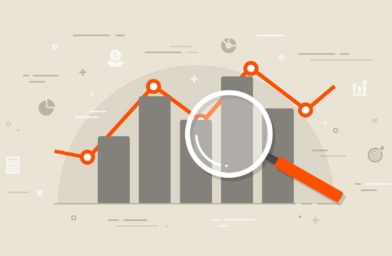When it comes to business strategy, market research is one of those things where 20% of the effort can bring 80% of the results.
Market research is the practice of gathering and analyzing data about your customers. It’s important because it lets you act based on real data rather than assumptions. Market research is a crucial element of business strategy that can save you lots of time and money with just a little bit of effort.
In this article, we’ll examine how to conduct market research in 4 easy steps.
Ready? Let’s go.
How to conduct market research in 4 easy steps
Yes, tour and activity companies can perform market research using traditional methods like SWOT and PEST analyses. While useful, these techniques originate from the 1960s and, well, a lot has changed since then. To bring things up to speed, we’ll borrow some concepts from the technology industry which are applicable to physical businesses too.
Are you planning to start or grow a tour business? Get your free Regiondo trial and create your online ticket store now.
Step 1: Define your hypotheses
In simple terms, the goal of market research is to establish and test your assumptions about your market, customers and competitive landscape. So the first step is to list your hypotheses (your “best guess”) about certain market dynamics.
This could be things like:
- What is your customer profile?
- Who are the major competitors?
- How big is the market?
- How much are people willing to pay for your tour or activity?
To make it easier to list your hypotheses, below are 3 tools that help you map out your assumptions about various aspects of your business.
Tool #1: The Business Model Canvas
The Business Model Canvas is a tool that helps you visualize your entire business in one place. It’s great when conducting market research because it helps you list out your hypotheses on a single sheet of paper so you can test them one by one.
You can list assumptions about your customer segments and the value they derive from your tour or activity. In addition, you can map out things like the types of relationships you want to develop with customers and the channels you can use to reach them.

Download a printable version of the Business Model Canvas and learn more about this tool here.
Tool #2: The Value Proposition Canvas
The Value Proposition Canvas helps you to map out more details about your market and customers. It serves a similar purpose to the Business Model Canvas in that it helps you list your hypotheses in one place. However, it goes into much more detail about your target customers, their pains, gains, and the competitive landscape. It’s especially useful when crafting your products and offers so you can bring more value to your customers.

Download a printable version of the Value Proposition Canvas and learn more about this tool here.
Tool #3: Hubspot’s Buyer Persona Generator
The first step you should take before starting your business or making big changes is to create your buyer personas. The buyer persona is a fictional representation of your ideal customer(s) and their core traits. This could be things like their demographics, buying habits, needs and preferences. For an easy way to create a customer persona, try this tool from Hubspot.
Once you establish a set of assumptions about your market and customers, it’s time to collect real data that proves or disproves them. Remember that your goal is to learn so having a wrong assumption is just as good as having a correct one.
Step 2: Collect data to validate your assumptions
There are generally two types of data you can collect: 1) qualitative and 2) quantitative.
Qualitative data relates to in-depth customer information from things like focus groups and interviews. This often involves speaking to people in person or over the phone to collect detailed information using open-ended questions. As the name suggests, quality is more important than quantity here.
Nowadays, websites like TripAdvisor help you collect user reviews which is a great starting point for your qualitative analysis. In addition, you can approach customers after they’ve tried your tour or activity and ask about their experience. To learn more about collecting qualitative data, check out this article.
On the other hand, quantitative data is focused on gathering more basic information from a large set of customers. Surveys are the most common way to collect such information as they are (usually) quick and easy to fill out. Check out Typeform if you want to create surveys that are beautiful and not annoying.
You can also rely on secondary sources of statistics related to your business such as Statista or Skift. To learn more about collecting quantitative data, check out this article from the British Library.
It’s important to use both qualitative and quantitative data when making decisions to get a better perspective on the issue you’re exploring.
Step 3: Analyze information
Once you’re happy with the amount of data you have, it’s time to structure it in a useful way. Simply going over what you’ve collected will give you huge insight into your customers and market. However, structuring it in a logical way can provide extra knowledge for you and your whole team.
This is where you will conclude if your hypothesis is right or wrong, for each assumption you’ve made. Here’s how to perform a simple statistical analysis and here’s how to analyze qualitative data.
Next, it’s time to act on the new information.
Step 4: Summarize, report, and act
Ideally, you will summarize your findings in a short document that’s easy to read and readily available. If you have a bigger team, it’s useful to distribute your findings to the relevant people so everyone is aligned and knows what to do based on the market research. If you need a good way to structure your findings, try out Google Data Studio.
Here’s an example to bring it all together
Let’s say you want to grow sales and you’re already working to full capacity on most days. You decide to test a higher price point and believe people are willing to pay 45€ per person instead of the current 35€.
To test your assumption, you can go to Expedia Local Expert and other top online travel agencies where you can see how much competitors are charging for the same or similar product. You can also find reviews on platforms like TripAdvisor to gather qualitative information about customers and how they feel about the price of similar products.
After collecting information about 15-30 competitors in similar markets, you see that the average price they charge is 32€ per person. You also find that customers often complain about the price in their online reviews. Therefore, increasing the price is not likely to be a favorable move unless you add more value to the existing offer.
This could lead to a new hypothesis such as “If I increase the duration, I can charge a higher price and increase my revenue”. Now it’s time to test this assumption and see if it holds out with real data.
While this is a basic example, it shows you the dynamics of the whole process. In just a few minutes, you can find a lot of data and make decisions with confidence. The experiment you design will depend on the hypothesis you test and the available information. The goal is to act based on concrete data instead of guesses.
Conclusion
Market research is the systematic collection and analysis of information about your customers and market. It’s important because it can save you a lot of time, effort and money creating something nobody wants or needs.
For conducting successful market research, you can borrow new techniques from the tech world and rapidly test your ideas and assumptions. Tools like the Business Model Canvas can help you visualize your hypotheses and test them one by one.
Your data collection method will depend on your exact business situation. Ideally, you should aim to get both quantitative and qualitative data to understand the big picture before making a decision.
To make the best use of the information, it’s important to structure it in a logical way and summarize it for yourself and your team. This way, you are more likely to act on it and derive the benefits from this new knowledge.
You might also like:





